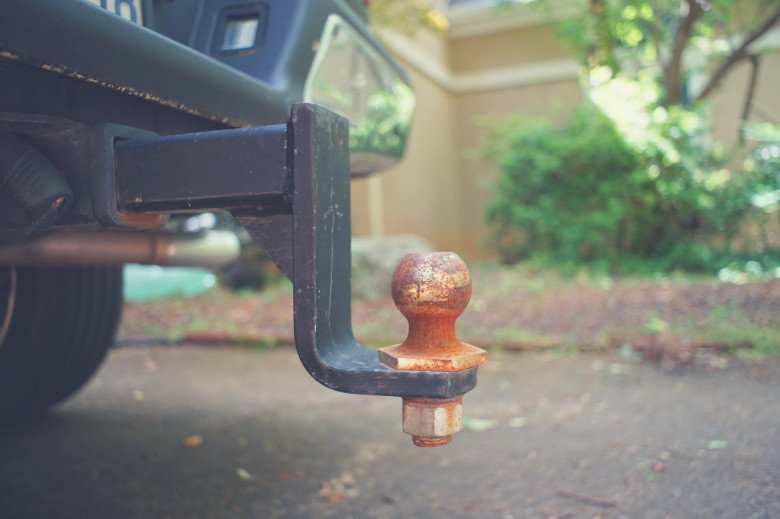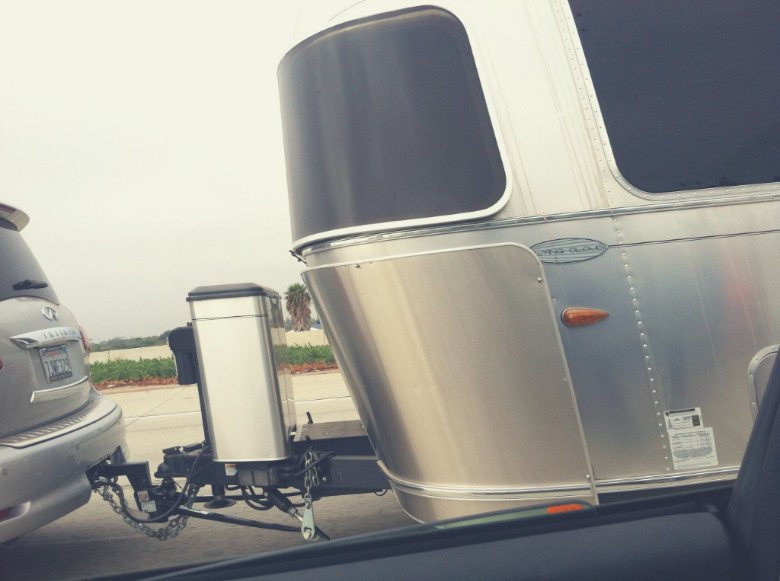One of the most annoying things about driving a
While that might be annoying, a
I don’t know who invented the weight distribution hitch. But I do know from experience that these are one of the best inventions ever. It’s right up there with automated vacuum cleaners and washing machines, at least in my book!
Most no-sway
If you’ve considered buying a weight distribution or no-sway hitch but you wondered what the difference was between them, wonder no more.
I’ve done some research for you and I will tell you what I’ve found is the best weight distribution hitch available on the market.
Andersen No-Sway Weight Distribution Hitch
Speaking of no pry bar needed anti-sway hitches, here is a perfect example of what I was talking about. This hitch has a 4 inch drop/rise and uses a 2 inch
I love this hitch because it self-adjusts! It weighs less than 60 pounds but don’t let that fool you. This hitch is heavy duty and it can take all the abuse you can dish out.
I also recommend this weight distribution hitch because it is super quiet. It smooths out the
If you have ever tried to back up a
This patented design doesn’t rely on torsion bars. Everything from hooking it up to uncoupling the hitch is so easy! I kept shaking my head wondering how this would work minus a torsion bar. But it worked like a dream.
There is almost no one with anything bad to say about this no-sway hitch. A few users complained that the tension plate became misaligned when backing into very tight spots. But since this can be removed in less than a minute, perhaps that is the way to go if you must park in such a tight space.
Yes, this costs a bit more than the typical weight distribution hitch. But in my opinion, it is worth every single penny.
Husky Weight Distribution Hitch
Like other hitches, this weight distribution hitch is designed to control both weight distribution problems and remove that unnerving swaying motion. All in one device.!
This one works for RVs, 5th wheels, and trailers up to 12,000 pounds, or 6 tons. It’s made from forged and hardened steel which offers some serious long-term service. It comes with a one-year warranty too.
By using trunnion style spring bars, this hitch offers more ground clearance than other brands of no-sway hitches. This hitch also has universal adjusting frame brackets, so it should fit nearly every RV on the road today.
Without any drilling into the
A few users complained that this hitch was so heavy that they couldn’t install it themselves. They had to take it to a hitch installation store to be installed. A few other users said that they found that while the ride was smoother, the hitch itself made quite a bit of noise.
For those with exceptionally large trailers, 5th wheels, or RVs, you can’t beat this type of control and weight distribution for the money.
EAZ LIFT Weight Distribution and Sway Control Hitch
All weight distribution hitches will claim they also help to stop swaying of the
This hitch can handle 1,000 pounds of tongue weight and can handle trailers up to 10,000 pounds. But EAZ Lift also offers a higher weight capacity if you need it.
Also, you will receive a ready to use 2- 5/8-inch
EAZ’s brand of hitches, made by Camco, have been around for at least 50 years. They are constantly creating new and improved weight distribution hitches. You know this is a name you can trust if they keep innovating. There is a lifetime warranty which says a lot about the confidence they have in their products.
I like the fact that the hitch ball is not only height adjustable, but you can also tilt the pitch to improve the amount of flex in the torsion bars! The shank is made from solid steel as well.
Many users say that when they had questions, customer service was super helpful. In my opinion, that is every bit as important as the price. What good is a great weight distribution hitch if you can’t get your questions answered promptly?
Now I did find a few users who stated that they had to modify the hitch and tack weld portions after just a year of use. They could have used the warranty for the second problem. I can’t help but wonder why they didn’t.
There were also a few users who said that the box was missing instructions or parts. I’m sure a quick call to customer service would have fixed this annoyance. Not good if you were planning on heading out that day or the next though.
If swaying is a big issue for your
Do I need a weight distributing hitch?

When it comes to safety, yes, you do.
If you are towing something that weighs 200 pounds and you have a one-ton truck, I suppose you don’t need it.
But for nearly everyone else, yes, you do.
When a weight distribution hitch is properly set up and adjusted, it evenly distributes the weight over the axles on your
This gives the
As I mentioned before, it will also give your truck a more level ride. There is nothing more annoying than oncoming drivers flashing their brights at you. But not only that, you lose some of your control over the brakes and steering.
Let’s not forget that you can also bottom out on a simple water run-off dip in the road. You will feel every single bump like you ran over a kid’s wagon.
While you might see others heavy trailers not using a weight distribution hitch, the fact remains that they should be.
If you have your doubts, try adding one to your
I know you won’t though. The difference is like night and day.
How do I choose a weight distribution hitch?

Choosing the correct weight distribution hitch isn’t as difficult as it seems. Use the two-step method below
Step 1
You need to know what is called the loaded
This isn’t the weight of your empty
The best way to do this is to use a device that weighs the tongue weight for you. It’s a small device called a
Even easier is a ball mount with a built-in weight scale. The Weigh Safe WS6-2.5 adjustable Ball Mount is also a great option because it provides a 6″ drop.
As an alternative, you could always see if you can use the local truck scales to determine the tongue weight of your
Regardless of which method you use, go to step 2 once you know the tongue weight.
Step 2
Now you can choose a weight distribution hitch that is within your tongue weight range. Don’t choose a hitch where your tongue weight is nearing its capacity.
For example: If the tongue weight of your
By choosing a weight distribution hitch with the rating close to the middle of the tongue weight for your
Can you back up with a weight distribution hitch?

Generally speaking, yes, you can.
But it is a good idea to release the weight distribution hitch before doing so. Nearly all of these hitches can be released in less than one minute, so it won’t be a big hassle.
You can damage the hitch or the
Some models state that it is OK to back up. Others state that you can back up only in a straight line.
But nearly all weight distribution hitches, especially if they contain anti-sway torsion bars, will tell you in big bold letters in the instruction manual that you should not make turns while backing up.
My best advice here is to read the instruction manual for your model. Know in advance before you get in a situation where you will need to back up the
Does weight distribution hitch reduce tongue weight?

The short answer is no.
A weight distribution hitch does what the name implies. It distributes the tongue weight up to the front axle of the towing vehicle so that the towing vehicle will be much more level and handle better.
Notice that the name does not call this item a weight-reducing hitch, but rather, a weight distribution hitch.
You might find some people who insist that they can carry more, but this isn’t true. These people might carry more because the
Does a weight distribution hitch increase towing capacity?

While a weight distribution hitch can sometimes increase the capacity of the receiver hitch, the towing capacity of the truck and weight capacity of the
Keep in mind that any system that you are using for towing, whether it is an RV towing a boat or your truck towing a
Conclusion
If you take away one thing from my research, let it be this.
It’s safer and easier to tow when the
Next time you’re on the highway, look around at all the trailers and find the ones without a distributing hitch. You may notice it looks funny if all the weight is in the back. That can be dangerous and hard to drive.
Towing is definitely easier with one of these handy devices.
Be safe when towing and look out for those around you.




